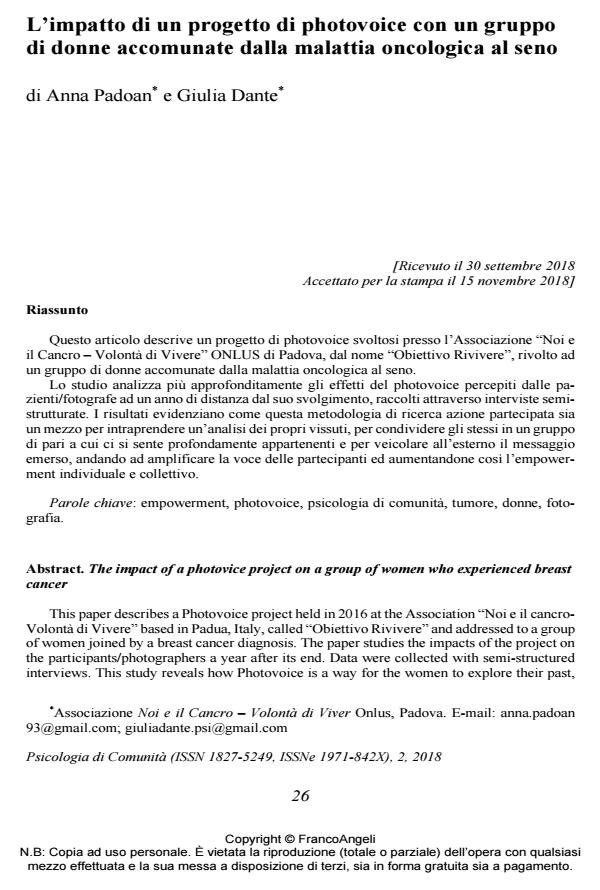The impact of a photovice project on a group of women who experienced breast cancer
Journal title PSICOLOGIA DI COMUNITA’
Author/s Anna Padoan, Giulia Dante
Publishing Year 2018 Issue 2018/2
Language Italian Pages 11 P. 26-36 File size 202 KB
DOI 10.3280/PSC2018-002004
DOI is like a bar code for intellectual property: to have more infomation
click here
Below, you can see the article first page
If you want to buy this article in PDF format, you can do it, following the instructions to buy download credits

FrancoAngeli is member of Publishers International Linking Association, Inc (PILA), a not-for-profit association which run the CrossRef service enabling links to and from online scholarly content.
This paper describes a Photovoice project held in 2016 at the Association "Noi e il cancro-Volontà di Vivere" based in Padua, Italy, called "Obiettivo Rivivere" and addressed to a group of women joined by a breast cancer diagnosis. The paper studies the impacts of the project on the participants/photographers a year after its end. Data were collected with semi-structured interviews. This study reveals how Photovoice is a way for the women to explore their past, share it with a peer-group they feel to belong to, and spread their message to a wider community, being able to improve both the individual and the collective empowerment.
Keywords: Empowerment, photovoice, community psychology, cancer, women, photog-raphy.
Anna Padoan, Giulia Dante, L’impatto di un progetto di photovoice con un gruppo di donne accomunate dalla malattia oncologica al seno in "PSICOLOGIA DI COMUNITA’" 2/2018, pp 26-36, DOI: 10.3280/PSC2018-002004